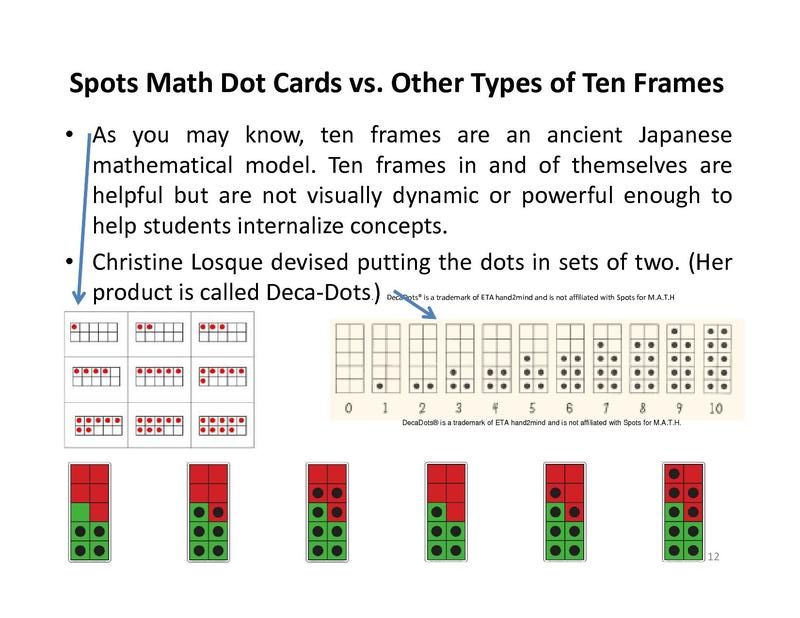Spots for Math Dot Cards vs. Other Types of Ten Frames
The NCTM points out, "The ten-frame uses the concept of benchmark numbers (5 and 10) and helps students develop visual images for each number." Using a ten-frame, students can easily see, for example, that 6 is 1 more than 5 and 4 less than 10, or that 8 can be seen as "5 and 3 more" and as "2 away from 10." Once students are able to visualize the numbers 1 through 10, they begin to develop mental strategies for manipulating those numbers, all within the context of the numbers' relationship to ten.
Ten frames are an ancient Japanese mathematical model. Ten frames in and of themselves are helpful but are not visually dynamic or powerful enough to help students internalize concepts. Christine Losque devised putting the dots in sets of two. (Her product is called Deca-Dots.) The division of the card into 5 red and 5 green is our innovation. Having the 5 as a bench mark helps differentiate between similar-looking numbers, such as the even numbers 4, 6, and or the odd numbers 5, 7, and 9.
With the Dot Cards as our base, we can call our approach a “quantity-based” approach as opposed to a digit-based approach. These cards are the most basic element of the program. The students learn to recognize each Dot Card as an image without counting the dots.
Once students learn what each Dot Card represents with instantaneous recognition, they can use these cards to build their understanding of progressively more abstract math concepts. Math becomes so simple that even when working with the complicated process of the “make a ten” strategy, one wonders, “What's so hard about math?”
Once students learn what each Dot Card represents with instantaneous recognition, they can use these cards to build their understanding of progressively more abstract math concepts. Math becomes so simple that even when working with the complicated process of the “make a ten” strategy, one wonders, “What's so hard about math?”



